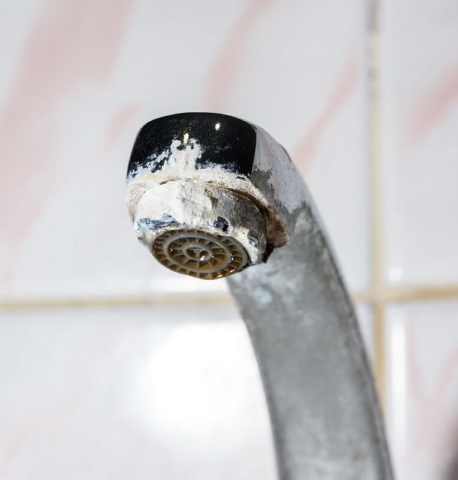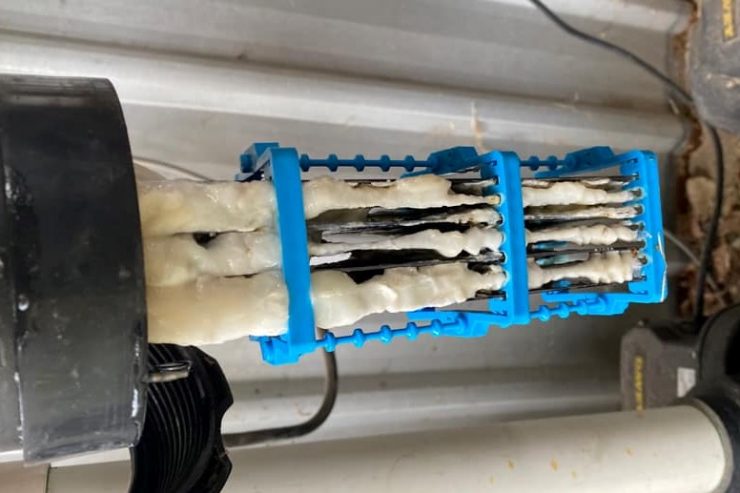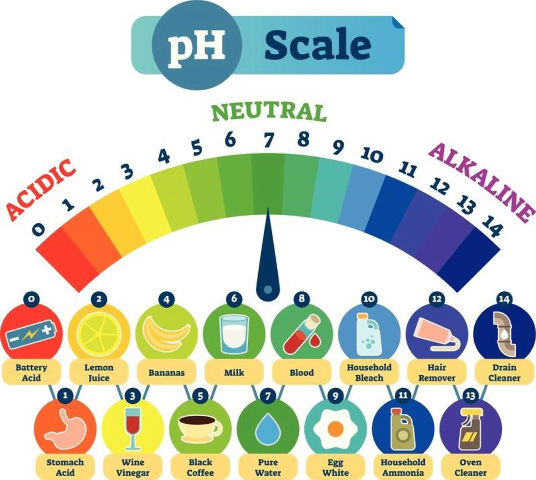You do your best to keep the consistency of your saltwater pool clear, which is why you’re baffled by the presence of these white flakes in your pool. There aren’t a lot of them, but enough to be concerning. What are these white flakes and how do you get rid of them ASAP?
White flakes in a saltwater pool are usually calcium carbonate flakes that are caused by a high pH or warm water. They are formed on the saltwater chlorine generator cell and are sent into the water. To remove calcium flakes from the pool, run the filter or scoop them out with a pool net. Prevent future buildups by balancing your pool’s pH and keeping the salt cell clean.
That was a lot of information we just threw at you, which is why we want to unpack it all ahead. First, we’ll explain in much more detail what calcium carbonate flakes are as well as where they come from. Then we’ll delve into calcium flake removal and prevention methods.
Let’s get started!
Article Contents
My Pool Has White Flakes – What Are They?
First, let’s solve your mystery – those white flakes towards the bottom of your swimming pool are calcium carbonate flakes. They usually enter your pool by the return line and are created from the salt water chlorine generator.
The saltwater generator makes chlorine via electricity, which is a process known as electrolysis. The salt cell, which is part of the chlorine generator, has plates or blades (electrodes) inside it. As part of this process, calcium builds up on the electrodes. When it is loose and flaky, it can break off and travel along pipes, and voilà, the white calcium flakes are in your pool.
Have you ever had dishes come out of the dishwasher with a foggy, white surface on them? Even if you hand-wash those dishes, the whiteness doesn’t go away, right? This is due to a buildup of minerals from hard water. The mineral buildup is known as scale.
You can also see scale buildup on the bottom of kettles or sometimes on the edges of taps.

Well, scale can occur in your saltwater pool as well. In the beginning, the problem occurs only on the cell plates inside the electrolytic chlorine generator. But as time goes by, the calcium continues to build up on the plates of the salt cell, and in your pool. As this happens the functionality of the generator will be seriously impacted.
Related Reading: Beginners Guide to Saltwater Pool Maintenance
What Causes White Flakes in a Pool?
It helps to understand what those white flakes in your saltwater pool are, but you can’t help but wonder what’s caused them. It all goes back to your saltwater generator and how it works. Let’s explain.

High Heat + High pH
As part of the chlorine making process, taking place inside the salt cell, sodium hydroxide is a by-product. Unfortunately, this is very high in pH. More than 13 on the pH scale.
And saltwater generators also produce heat as they work. High heat and high pH are two conditions that increase calcium scale. Even if the generator didn’t run so hot, the continuous presence of sodium hydroxide in your saltwater pool inches up the pH of the water little by little – meaning more white flakes.
When Do the Salt Flakes Occur?
It’s worth noting that it’s not all the time that the salt cell creates scale and calcium. It’s usually immediately after the salt cell and pump are switched off.
When you switch off the pump and chlorine generator, inside the salt cell you’re left with water that is:
- high in sodium hydroxide
- has a high pH
- is a little warmer
These conditions are perfect for scale to form on your saltwater cell.
Without reducing the pH (which we’ll talk more about a little later), you could have a full-blown scale problem that affects your saltwater pool in its entirety.
Reverse Polarity
A chlorine generator (aka chlorinator) isn’t like a pool pump. If anything, it runs maybe half the time your pool is on and at most, 70 percent of the time. Depending on the power level and the hours of operation of the pool pump, your generator is producing chlorine for 6 to 12 hours a day.
In those hours of operation, the electrolytic chlorine generator will run in cycles, turning on and off. This is what makes the chlorine.
While this is happening, from time to time, the chlorine generator will reverse the polarity of the electricity to help clean the salt cell electrodes. Reverse polarity is the process of reversing the voltage and then reversing it back again. It simply means the electricity has changed from one direction to another.
Reverse polarity isn’t a one-time event. Due to how chlorine generators operator, your generator can use reverse polarity several times a day to help keep the saltwater cell clean and free from that white flaky calcium.
Why is this important? Well, each time the electricity changes directions, calcium carbonate scale that was stuck on the interior components of the generator can be shaken loose and is now a lot likelier to come off and enter your pool
How to Remove Calcium Flakes from Your Pool
Scale within your saltwater swimming pool isn’t a good thing. Calcium usually accumulates around the waterline. It looks white or a light gray color. This is similar to what you find on a kettle element or sometimes on the edges of a tap.
Too much calcium in the water can also lead to cloudy or milk pool water and if it’s bad, can clog up pool equipment such as heaters.
Fortunately, when you spot scale, you can get rid of it through a combination of methods. Here’s what we recommend.
Scale Remover
A descaling agent or scale remover is a chemical that will remove scale off important components inside your generator and possibly the rest of your pool as well. Clorox’s pool descaler is formulated to go directly into your pool. You can get it here:
- Prevents and removes metal stains (copper, iron)
- Ideal for treating & maintaining hard water
- Protects against scale & calcium
Then you can use a scrubber to remove scale from the walls of your pool. Clorox recommends applying their descaler once weekly to limit scale. You should also test the chemistry of the water after cleaning with Clorox descaler to ensure the chemicals are balanced.
Stain Eraser
You used Clorox’s descaler, and while it certainly helped, you still have mineral stains all over your vinyl pool liner or fiberglass pool. You might need a product intended just for treating stains such as Bosh Chemical’s stain remover. Try this product to treat stains:
- Eliminates metal & rust stains
- Works on pool liners & fiberglass pools & spas
- Removes stains naturally without scrubbing
You can buy two pounds of this stuff at a time for heavy-duty pool cleanup. Bosh says their stain remover is safe to use on a variety of pool surfaces, including metal, fiberglass, and vinyl.
Besides scale, Bosh’s stain remover is also approved for reducing rust on metal pool parts such as your ladder. To use, pour it in and then brush around the stained surface. One canister can treat 20,000 gallons of pool water, and the included citrus scent is light and refreshing.
Pumice Stone
Concrete and tile respond best to pumice, which can while away calcium deposits in a jiffy. You’ll need to put in some hard work though.
As a warning, we only recommend a pumice stone on hard exterior surfaces or tiles, not your swimming pool liner or on fiberglass pools. If you try rubbing a pumice stone on your liner, you’re going to tear it. You can grab a pumice stone for your pool here:
- Removes lime, rust, algae & leaf stains
- Works on concrete or tile pool surfaces
- More effective than strong acid chemicals
How to Prevent White Flakes & Calcium Buildups
As part of owning a saltwater pool, there’s always some risk of calcium carbonate flakes showing up at the bottom of your pool. That’s just due to how the generator works and something you have to live with.
On top of that, the heat and high pH of the generator creates the perfect breeding ground for scale.
The following methods are your best ways of fighting back against calcium scale and calcium flakes. These measures require diligence, as going too long without doing them gives the scale the space it needs to accumulate.
1. Balance the Pool pH
The presence of sodium hydroxide in your saltwater pool increases the pH, so you shouldn’t go longer than a week without testing your pool’s pH levels.
If you confirm that the pH is on the rise, you’ll need to lower it back to the perfect range, which is 7.4 to 7.6. A pH reducer will become your best friend.

You’ll want to use muriatic acid or sodium bisulfate. These two products will reduce pH in your pool. Muriatic Acid will reduce pH. Here’s a muriatic acid we recommend:
- Same powerful cleaning properties as muriatic acid, but with added benefits
- Reduces the risk of corrosive damage to surfaces
- Effective alternative to traditional muriatic acid
You can also use sodium bisulfate to reduce pH. Get your pH reducing sodium bisulfate here:
- Reduces pH to protect equipment and surfaces
- Optimizes sanitizer efficiency & helps prevent algae
- For pools and spas
2. Clean Salt the Cell Regularly
We didn’t explain electrolysis in too much detail. The salt cell, uses plates with coating such as ruthenium. These plates or fins have a negative charge on one side and a positive charge on the other and this is used to use the salt water to create chlorine.
Salt cells are where scale buildup will occur first. Cleaning salt cells is one way to counteract this. To clean the cells, you must first turn your pool pump off. Next, you have to take the salt cell out.
You can use a garden hose to rinse the salt cell in most instances, but if the scale accumulation is severe or it’s really stuck on there, you might need a specialized cleaner like BioGuard. Use this product to clean your salt cell:
- Prevents calcium buildup, extending the life of salt cells
- Specifically designed for saltwater pools
- Protects pool walls & equipment from calcium & scale
Here’s a full article on how to clean your salt cell.
3. Run the Pump without the Salt Generator
The calcium deposits or scale occur in the time immediately after the salt generator and pool pump have been switched off. It’s this time when the water is not flowing through the salt cell that the problem occurs.
As we discussed earlier, as soon as the pump and salt cell is switched off, the water in the salt cell will have a high concentration of sodium hydroxide, which is high in pH.
To counteract this, instead of switching off the salt cell and pool pump at the same time, leave the pump running for an additional 30 mins. Doing this will allow fresh pool water to flow through the salt cell flushing out the high concentration of sodium, hydroxide.
As a result, you should have less scale on the salt cell.
Related Reading: How Long To Run Saltwater Chlorine Generator (Chlorinator) & Pump?
4. Balance LSI/CSI
As a saltwater pool owner, you must understand the Langelier Saturation Index or LSI. This measurement calculates the water balance of your pool based on the level of calcium carbonate saturation.
If water is low-LSI, then it could be too corrosive. Should the LSI be balanced, your water is in good shape. Pool water that is high-LSI is likely to develop scale.
To determine the LSI of your pool, you need to know the level of total dissolved solids or TDS per ppm, the level of cyanuric acid or CYA per ppm, the carbonate alkalinity per ppm, the calcium hardness per ppm, and the water temperature in degrees Fahrenheit.
Then you can plug those numbers into this handy math formula: (pH) + (Temperature) + (Calcium hardness factor) + [(Total alkalinity ppm) – (CYA ppm x correction factor @ current pH)] – (TDS) = LSI
Or, even easier, use this calculator.
Conclusion
If you see white flakes in your saltwater pool, they’re calcium carbonate deposits. Your chlorine generator, while keeping your pool clean, also creates calcium scale buildup.
Since scale can kill reduce the output of your chlorine generator and possibly affect the rest of your pool as well, seeing flakes floating in the water is not something to ignore. Use a descaler, reduce the pH of your pool, and begin tracking the LSI. Best of luck!
Related Reading:
Ideal Pool Salt Options for a Saltwater Pool
Causes of White Spots on Pool Plaster








Good article thanks for the information